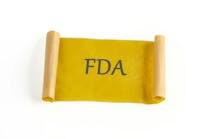As more research on the efficacy of ultraviolet (UV) disinfection systems emerges, more healthcare facilities are adopting the technology to help reduce the spread of infection. Mobile UV disinfection units (commonly called robots) are now a staple in many EVS departments for ridding patient rooms, surgical suites, and other areas of harmful pathogens, and are particularly useful when used in a bundle. Many UV product brands have also surfaced in recent years, each proposing to offer something better and unique. But the one thing they do have in common is that none of the machines are safe to operate when people are in the room.
That’s not the case with certain ceiling- or hard-mounted UV and LED light fixtures specifically designed to provide all-day, continuous disinfection in the OR. Certain UV products claim to be safe – when switched to “procedure mode” – so that they can be used when healthcare workers and patients are exposed to the light; or in the case of LED, remain safe at all times. Hence, the products could provide some added protection inside surgical suites where sterility is critical to preventing surgical site infections.
The hard-mounted devices offer other benefits as well, according to Sam Guzman, Manager, Special Operations and Healthcare Initiatives, American Ultraviolet. “No one needs to go and get the unit from another room or wing in the hospital and no waiting for the device to become available,” said Guzman. “The lamps mounted on the ceiling eliminate or limit shadows and they flood the entire room all at once – only one cycle required.”
Guzman says the company’s ultraviolet disinfection OR package was upgraded recently, with improved data-logging features, an illuminated “UV IN USE” warning sign, an automatic daily disinfection cycle, and a touchscreen intelligent controller, which replaced the system’s previous knobs and switches.
“The controller is really the brains of the system and it is the most dramatic change to the package,” said Guzman. “If a fixture or lamp fails, the controller will notify the user of the failure and record the fault. The new style controller also is the key to making the system truly a dual-purpose system as it allows the operator to select either procedure or disinfection mode.”
Cliff Yahnke, PhD, Director of Clinical Affairs for the Indigo-Clean product at Kenall discussed a similar solution – the M4SEDIC14 MedMaster for Surgical Suites product line which operates on LED visible light. He says the units can be used safely during an entire procedure with no adverse effect on human health. “The OR has a much larger amount of white light and so a larger amount of blue light can be added without distorting visual acuity, and the fixture can automatically shift to an ‘Indigo-only’ mode which produces a substantially larger amount of safe, blue light when the room is unoccupied,” Yahnke explained. “UV devices provide great disinfection on illuminated surfaces, but after they’re done, bacteria begin to re-enter the space. UV devices also require large capital purchases, consumables, yearly maintenance, and trained staff to operate.
“Indigo-Clean provides continuous disinfection throughout the day, doesn’t require yearly consumables or maintenance, and can be operated automatically through overhead lighting controls. This saves time, labor, and potential compliance issues.”
Yahnke says installing LED visible light fixtures in the OR is well worth the investment – saving both lives and dollars. “If you prevent one infection in an OR with Indigo-Clean, you will pay for the fixtures. Depending upon each institution’s infection rates, this payback can be less than one year,” he asserted.

Valerie J. Dimond | Managing Editor
Valerie J. Dimond was previously Managing Editor of Healthcare Purchasing News.







